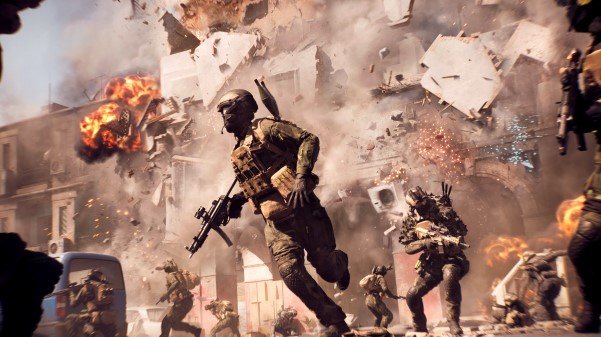Electronic Arts launched Battlefield 6 on October 10, 2025, and it quickly became one of the year’s biggest hits by selling over seven million copies in its first few days. This first-person shooter, set in a near-future conflict, combines a single-player campaign with multiplayer modes and uses a live-service model to drive ongoing revenue through seasons, cosmetics, and free-to-play elements.
Record-Breaking Launch Drives Early Success
The game hit shelves worldwide for PlayStation 5, Windows, and Xbox Series X/S, drawing massive crowds thanks to strong hype from betas and trailers. Analysts report that Battlefield 6 generated more than $350 million in revenue within the first week, with most sales coming from PC players on Steam.
This launch outperformed many expectations, especially after the mixed reception to Battlefield 2042 in 2021. Electronic Arts focused on core features like class-based gameplay with Assault, Engineer, Support, and Recon roles, which helped pull in both new fans and series veterans. Early player counts peaked high, showing strong initial engagement.
Pre-launch sales alone topped 1.8 million copies on Steam, bringing in over $100 million before the official release. This momentum sets a solid base for long-term growth.

The success ties back to smart marketing and community buzz, including influencer partnerships that spread word on social media.
Monetization Strategies Fuel Ongoing Revenue
Battlefield 6 uses a premium launch price but layers on live-service elements to keep money flowing. Players buy the base game, then spend on optional items like season passes, cosmetic skins, and bundles.
The model includes battle passes that reward progress with exclusive gear, encouraging daily play without forcing purchases. Electronic Arts plans free-to-play modes, such as a battle royale, to attract more users and boost in-game spending.
- Cosmetic catalogs offer weapon skins, uniforms, and charms for personalization.
- Limited-time events tie into holidays, driving impulse buys.
- Cross-play features let friends join across platforms, expanding the player base.
This approach mirrors successful games like Call of Duty and Fortnite, where microtransactions make up a big chunk of earnings. By avoiding paywalls for core updates, the game keeps players happy while monetizing extras.
Analysts predict this setup will help reach over 100 million players, though some developers doubt that goal. The budget topped $400 million, so steady revenue is key to recovery.
Seasonal Content Keeps Players Coming Back
Electronic Arts schedules updates every eight to 12 weeks, packing in new maps, modes, and missions. This cadence turns one-time buyers into repeat spenders by refreshing the experience.
The new Escalation mode adds tense, objective-based battles that fit well with seasonal themes. Free core updates ensure everyone can join, while paid passes unlock premium rewards.
User-generated content plays a role too. Players create modes and share them, extending the game’s life at low cost to developers.
Recent events show this working. A Halloween-themed event in late October 2025 drew record logins, with bundles selling fast. This ties into broader trends, like how live services helped games weather slow periods in 2024.
Forecasts suggest this will stabilize cash flow, reducing risks from launch-only sales.
Challenges and Future Projections
Not everything is smooth. High development costs raise stakes, and competition from titles like Call of Duty remains fierce. Some players worry about aggressive monetization, but Electronic Arts promises fair practices.
The game aims to evolve with player feedback, including tools for custom experiences. Projections for 2026 include more free modes to hit growth targets.
| Aspect | Battlefield 6 Details | Comparison to Past Titles |
|---|---|---|
| Launch Sales | 7 million copies in first week | Battlefield 2042: 4.2 million in first week |
| Revenue | $350 million initial | Battlefield V: $200 million initial |
| Player Goal | Over 100 million | Battlefield 1: 25 million lifetime |
| Budget | Over $400 million | Battlefield 2042: Around $200 million |
This table highlights how Battlefield 6 builds on the series’ history while pushing boundaries.
Balancing free and paid content will be crucial. If done right, it could set a new standard for shooters.
Lessons for the Gaming Industry
Battlefield 6 shows how blending premium sales with live services creates a resilient business. It rewards loyal players and attracts casual ones through accessible entry points.
Other studios can learn from this. Focus on community tools and steady updates to build lasting habits.
As the industry faces rising costs, models like this offer a path forward. Electronic Arts’ strategy ties into recent shifts, such as increased focus on cross-platform play after successes in 2024.
What do you think about Battlefield 6’s approach? Share your thoughts in the comments and pass this article to fellow gamers for more discussion.








